What's New
Displaying results 4111 - 4120 of 4924
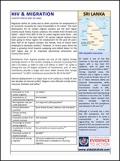
Resource | Fact Sheets,
Migration within Sri Lanka and to other countries for employment is an economic necessity for many households in Sri Lanka. The main destinations for Sri Lankan migrant workers are the Gulf region (mainly Saudi Arabia, Kuwait, Lebanon, the United Arab Emirates and Qatar) ‐ which hires 90% of the Sri Lanka migrant work force ‐ and other countries in the Asia Pacific. Sri Lankan migrant workers have been going to these regions for employment for the past 20 years. Over half of all migrant workers are female, 91% of whom were employed as domestic workers. However, in recent years, there has been a growing trend towards supplying semi‐skilled labour to the Gulf region due to its improved educational attainment and construction boom.
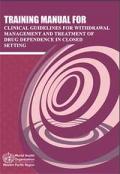
Resource | Tools,
This training manual has been written as a companion to the WHO Clinical Guidelines for Withdrawal Management & Treatment of Drug Dependence in Closed Settings. It contains comprehensive trainer's notes and participant handouts. A powerpoint slideshow is also provided as a teaching aid. The training described in this manual is suitable for all people who work in a health or welfare capacity in closed settings and whose work involves people who use drugs.
Throughout the trainer's notes are sections of boxed text containing references to participant handouts. These should be used to ensure participants are looking at the correct handouts. Also in boxed text are suggested activities. The trainer may wish to use these, or to use other activities that they have found useful in training.

Resource | Publications,
A Computerised Management Information System (CMIS) for monitoring the implementation of the National AIDS Control Programme in India was initiated in 2001. The CMIS has been designed to provide continuous critical information on the response to the HIV/AIDS epidemic in India. The CMIS enables National AIDS Control Organisation, State AIDS Control Societies and district units to use programmatic information for evidence based planning, for identifying appropriate strategies and for developing district and state level capacities for collection, analysis, interpretation of data and relevant remedial actions.
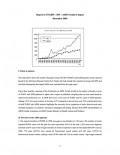
Resource | Publications,
The reported number of PLHIV in 2008 was again a record high at 1,126 cases. The number of newly reported PLHIV cases over the past five years represents 45.2% of the total. 1,033 cases were Japanese nationals and 93 cases were foreign nationals. In terms of exposure routes for the reported PLHIV cases in 2008, 779 cases (69.2%) were caused by homosexual sexual contact and 220 cases (19.5%) by heterosexual sexual contact, making a total of 999 cases (88.7%) by sexual contact. Age ranges centered on the 20-39 group (70.3%), with both Japanese and foreign nationals seeing most reports in the 25-34 age range for males and the 20-24 age range for females.
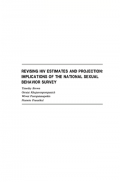
Resource | Publications,
This paper will explore that proposition and discuss the future of the Thai epidemic by presenting revised HIV projections that incorporate new data on changes in sexual behaviors among heterosexual men and women in Thailand collected from The National Sexual Behavior Survey of Thailand 2006 (NSBS 2006). This new projection will also take into account expected changes in risk behaviors in both commercial and casual sex from 2007 until 2020. This revised scenario will then be compared to the current national HIV projection to illustrate the impact that heterosexual behavior changes are likely to have on the epidemic.
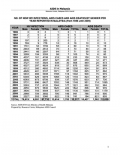
Resource | Data Sheets,
The document shows number of new HIV infection, AIDS cases and AIDS death in Malaysia from 1986-2009.
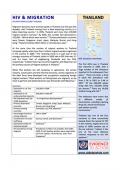
Resource | Fact Sheets,
Migration dynamics have evolved rapidly in Thailand over the past few decades, with Thailand moving from a labor‐exporting country to a labor‐importing country. In 1995, Thailand sent more than 200,000 migrant workers overseas. By 2004, this number had decreased to 150,000 – 18% of whom were women. Primary destination countries were Taiwan, Singapore, Israel, Japan, Malaysia, Brunei, and Hong Kong. Thailand receives USD 5 billion in remittances a year.
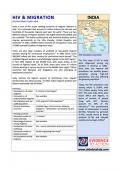
Resource | Fact Sheets,
India is one of the major sending countries of migrant laborers in Asia. It is estimated that around 15 million Indians live abroad, and hundreds of thousands migrate each year for work. There are two different classes of migrant workers: the highly technically skilled, and the unskilled. The Indian professionals and technical workers tend to migrate permanently to the USA, Canada, United Kingdom and Australia. In 2001, 23,000 Indians received US immigration visas, and 17,000 received Canadian immigration visas.
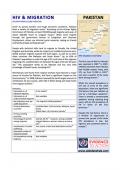
Resource | Fact Sheets,
Given its porous borders and tough economic conditions, Pakistan faces a variety of migration issues. According to the Human Rights Commission of Pakistan, at least 450,000 people migrate each year, of whom 300,000 resort to irregular means. While some migrate through the government Bureau of Emigration and Overseas Employment, others use informal social networks, relying on friends and family already working abroad.
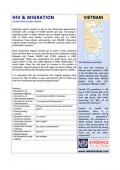
Resource | Fact Sheets,
Exporting migrant workers is part of the Vietnamese government’s mandate, with a target of 75,000 workers per year, increasing to 100,000 by 2010. In 2006, Vietnam sent out 78,855 migrant workers, 35% of whom were female. Currently, there are 3.2 million Vietnamese living abroad permanently, and 500,000 Vietnamese migrant workers working in over 40 different countries under time‐limited labor contracts.





